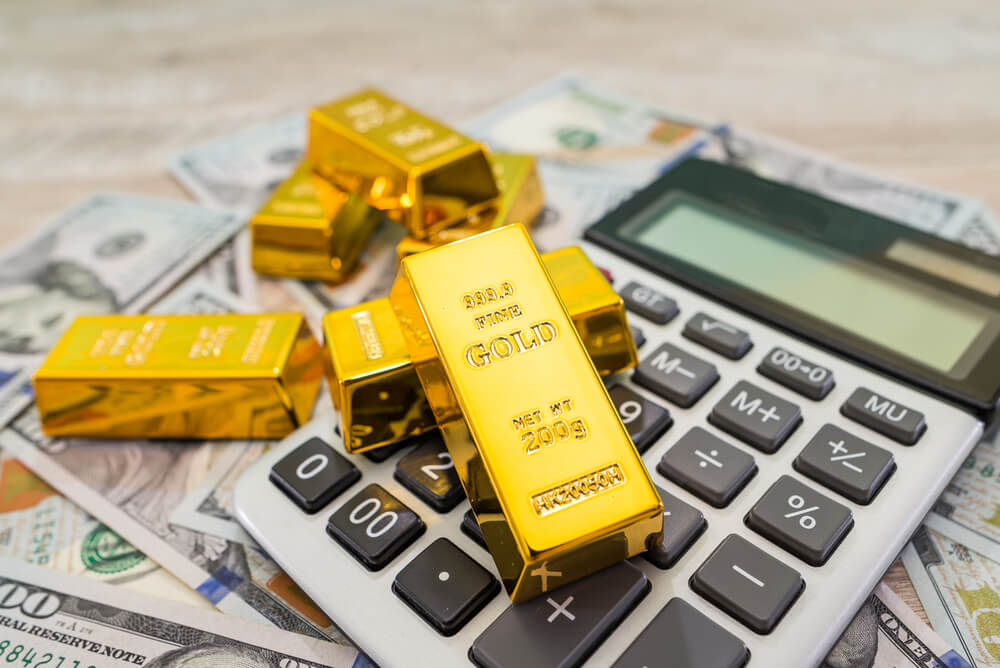
Brass vs. Gold: An Honest Comparison
Gold is gold. Brass is brass. But brass also looks a tad like gold, besides sharing some of the precious metal’s traits. And if the gold is not entirely gold, it starts to look more like brass or the other way around.
These aspects are the significant reasons brass is so widely used as a base metal in gold-layered pieces, such as gold-filled jewelry and gold-plated jewelry. The plated gold easily camouflages the underlying brass, or a thin layer is enough to attain the quintessential gold jewelry look.

Most people know what gold is and how it looks. On the other hand, “brass” is a term many people would have come across but may not know what it is, how it looks like, etc. In this article, we’ll discuss brass in great detail so that you become more than familiar with the alloy, besides drawing a clear distinction between it and gold.
The article shall discuss the following:
- Offer a simplistic overview of gold (to serve as the starting point for the brass comparison)
- A comprehensive introduction to brass; its traits and applications; and more
- A table comparing the critical attributes of the two metals, which should serve as your quick reference guide
- Discussing the different methods to identify gold and brass, and more
After reading this post, you would appreciate gold for what it is and also learn the significant role brass plays in different applications. Keep reading.
Table of Contents
Gold: A Simplistic Primer
As mentioned earlier, gold requires no introduction. But for the sake of this comparison, let’s glaze over some of gold’s marquee attributes:
- Gold occurs naturally (found in natural deposits, quartz rocks, nuggets, etc.), or humans cannot make gold in labs.
- Gold is a dense precious metal that’s non-magnetic and non-reactive. It doesn’t oxidize, tarnish, or lose its characteristic bright yellow tone at any point in its (forever) lifespan.
- The yellow metal has both industrial and aesthetic applications. People have been wearing gold jewelry pretty much since the metal’s inception. Not to mention, gold is found in pretty much all electronics.
Gold is a vast topic in itself. If we had to talk about it more, we could certainly do that. But because we’ve covered the metal in-depth in our previous write-ups, we don’t want to repeat ourselves. Therefore, we encourage you to click on this link and pore over our detailed coverage of the metal from different angles.
Read more: How Gold is Formed
What is Brass?
Contrary to common belief, brass is not one solid metal. It’s made of copper and zinc. The copper-zinc ratio is not set in stone. Brass is a darker yellow if copper is the primary metal. The brass would assume a more yellow tone or brighter hue when the zinc content is greater. Usually, brass has more copper than zinc.
Brass doesn’t rust. But it could erode or tarnish when not finished with lacquer or any transparent paint since brass reacts with air or the oxygen in it. If brass develops wear and tear signs, some resurfacing can make it look new again. You can refinish brass multiple times and restore its original polish. Not to mention, refinishing is a relatively straightforward process.
Due to its resemblance to gold, gold jewelers often use brass in their creations — particularly those who make gold-filled or gold-plated jewelry. Music instruments such as trumpets, horns, trombones, etc., could also be made of brass due to the alloy’s “sound” (no pun intended) acoustic properties.
Brass is Commonly Used in Bridge or Fashion Jewelry
Because brass is a robust alloy and abundantly available, it is commonly used as the base metal piece for gold-plated or gold-filled jewelry — such as a wedding ring, bracelets, necklaces, etc. The low price point of the alloy coupled with its ability to emulate gold’s luster courtesy of gold plating is key to the metal’s popularity among jewelers.
But all is not well with brass jewelry. Brass is not hypoallergenic. Some people with sensitive skin avoid gold-plated brass jewelry as the alloy causes a reaction or rash. Then there’s also the “deteriorating appearance” concern. Brass polished to look like gold will not tarnish. However, unfinished brass will eventually lose its original appearance. Moreover, both finished and unpolished brass would finally change color after some time.
And do not look at brass jewelry from an investment perspective because it holds no value whatsoever — and quite understandably so since the metals (copper and zinc) used to make brass are not rare or precious.
Brass and Gold: A Comparison Table
The following is a comparison between brass and gold on some key parameters:
| Traits | Gold (24k) | Brass |
| Density | 19.3 g/cm³ | 8.73 g/cm³ |
| Color | Glittering bright yellow | Relatively dull yellow |
| Melting point | 1064°C (1947.2°F) | 905 to 932°C (1661 to 1709°F) |
| Composition | Pure gold | Copper and zinc |
| Magnetism | Non-magnetic | Non-magnetic |
Notes:
- Gold could change colors or turn into a muted yellow depending on its alloy composition. Based on the alloying metals and their proportion, gold could lose its yellow hue considerably (white gold, pink gold, etc.).
- Pure gold is not magnetic, but the karat rating of gold or the metal object it’s blended with could cause the gold item to turn magnetic.
Differentiating Gold from Brass

At first glance, gold should be easily discernible from gold — especially if you have both handy for a side-by-side comparison. However, since gold could alloy with other metals and assume a more muted yellow color or look more like brass, differentiating between gold that isn’t 24k and brass could be a bit challenging. For some, delineating pure gold from brass, or the other way around, itself is a tough assignment.
Here are ways or techniques through which you could make the distinction between brass and gold:
- Acid test: Pour a few drops of concentrated nitric acid on the two. Real gold will not react, but brass would since it’s essentially copper and zinc. Copper usually doesn’t react with dilute acids but nitric acid. Zinc also reacts with nitric acid. Long story short, brass items bubble or discolor when subjected to concentrated acids. Gold doesn’t budge.
- Looks: Before applying concentrated acid to examine the elements, do a basic vision test. If you know what you’re looking for, telling real gold or brass apart from each other shouldn’t be difficult. Solid brass is a dull yellow, or the yellow doesn’t glitter like in the case of gold. However, if the gold is not a pure metal or is 12 karats or less, telling the two apart would be challenging. Also, if there are signs of wear, the item is most likely brass since gold doesn’t corrode or oxidize. That said, a blemish-free appearance doesn’t imply the article is gold.
- Markings: Gold’s purity is measured in karats. If the retail piece you’re handling has karat numbers (22k, 18k, 14k, etc.) inscribed, it’s gold. If there are no karat numbers etched, it’s not gold — at least not retail gold. Brass items, such as a brass plate, may have the words “brass” engraved or stamped for identification. Like karat inscriptions, the brass stamp would be located on the bottom or inside lip of the given object.
- Malleability: Gold is soft, and rubbing it against a ceramic surface would leave a golden trace on the metal. Brass, although sporting the golden color, will leave behind a black or dark trail.
- Smell: Gold has no scent. Also, metals smell when they tarnish or degrade. Since gold doesn’t do any of that, even the oldest gold articles do not give away any scent. If a piece of gold emits a fragrance or odor, it’s not pure gold. On the other hand, brass has a smell, and the fact that it can tarnish and wear over a period adds to the intensity of the metal’s odor. Rub the brass onto your finger and smell your finger to get a whiff of its scent.
If none of the testing methods above provide conclusive results or you’d like an expert to chime in, take the items to a jeweler or pawn shop you trust for an assessment. Needless to say, if you bought the two items and have the purchase receipts handy, you won’t need any help identifying which is what since the price discrepancies between the two would be clear giveaways.
Read more: What is the Gold Standard
Conclusion
Gold and brass are pretty similar looking. And if brass had the same sheen as gold or some glitter, the alloy could be easily mistaken for the yellow metal.
Gold looks different from brass only when it’s in its purest form. Otherwise, the lines demarcating the two elements become thinner. 10k or 12k gold, for instance, can be extremely difficult to differentiate from brass since it’s likely to have a fair amount of copper in it like brass.
Hopefully, this “brass vs gold” comparison article gave you a complete picture. And suppose you are one of those people who thought brass was a naturally occurring material. In that case, we believe this write-up not just dispelled your misconception but offered you a lot more information about the alloy and its multiple attributes and applications.


